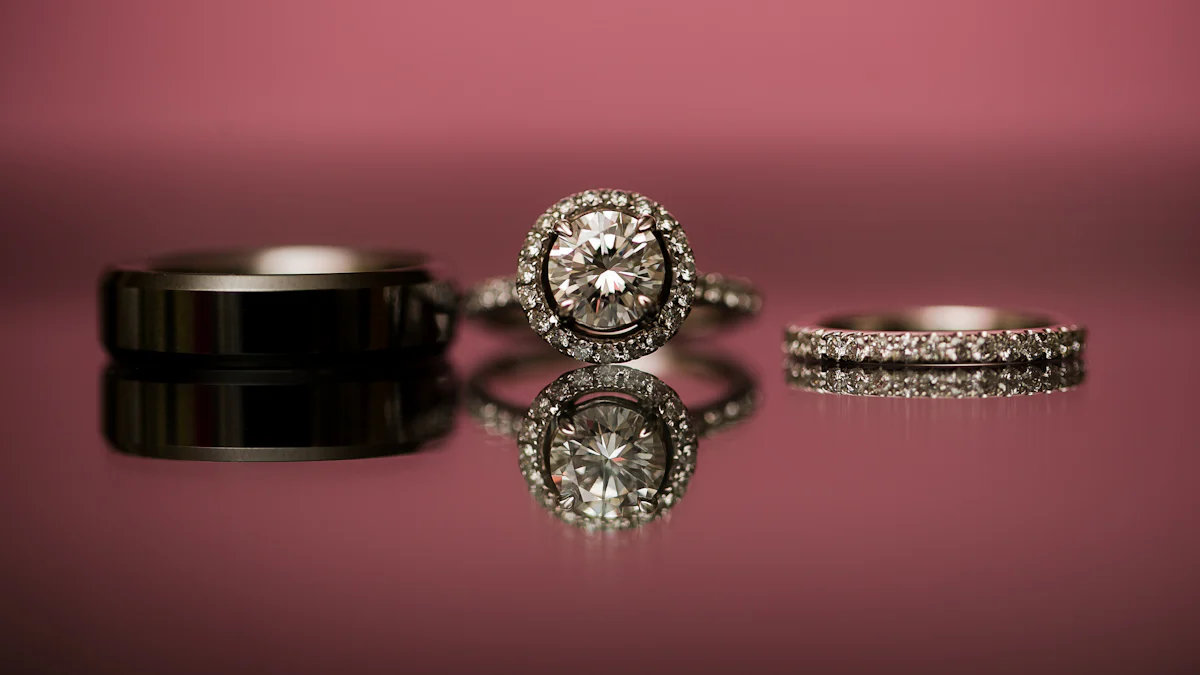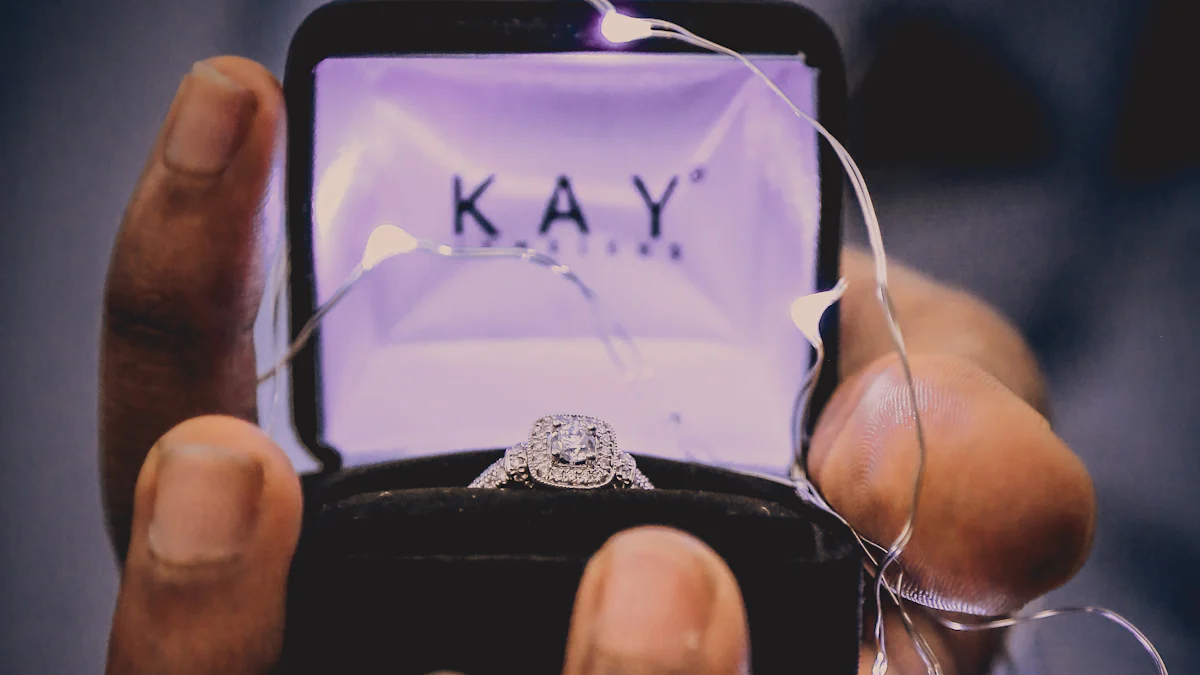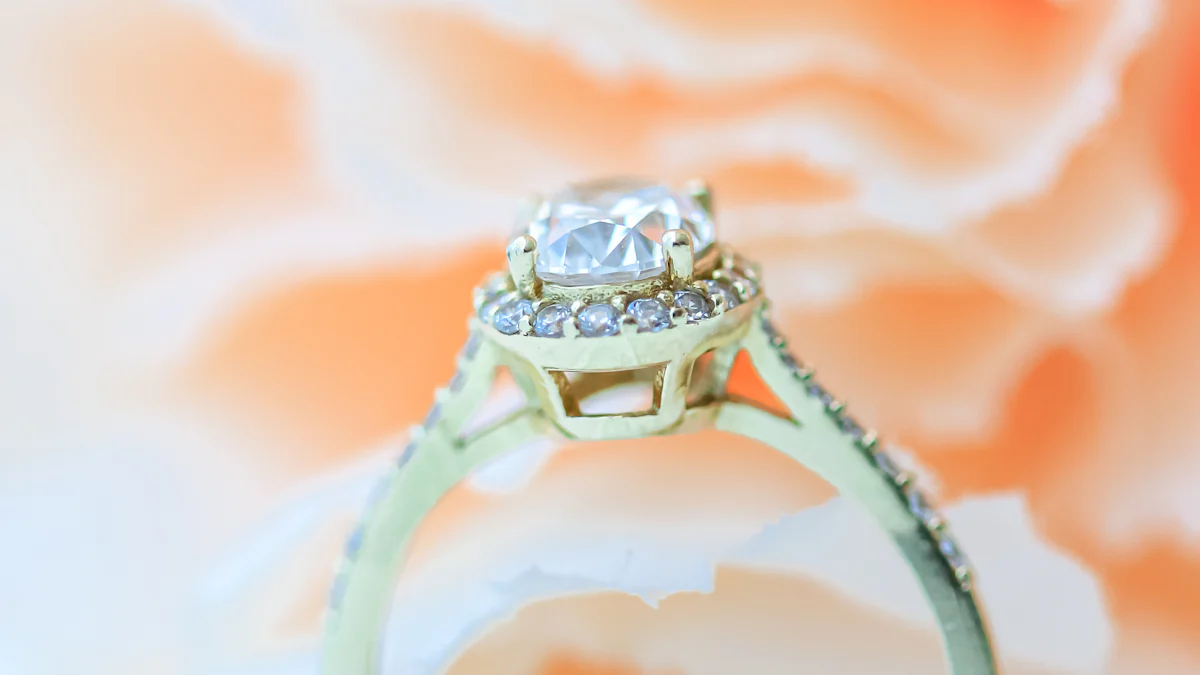How Much Will a 2 Carat Diamond Cost in 2024

The cost of a 2-carat diamond in 2024 will vary widely, influenced by its type and quality. If you're wondering how much will a 2 carat diamond cost, natural diamonds typically range from $8,000 to over $40,000, while lab-grown options are significantly more affordable, priced between $600 and $5,000. The 4Cs—cut, color, clarity, and carat weight—play a crucial role in determining value. Market trends also show a growing preference for lab-grown diamonds, which are about 70% less expensive than natural ones. This shift, combined with increased availability, may lead to stable or slightly declining prices for both types of diamonds.
Key Takeaways
Understand the 4Cs (Cut, Color, Clarity, Carat Weight) as they are crucial in determining a diamond's value and price. Natural diamonds range from Natural diamonds range from $8,000 to over $40,000, while lab-grown diamonds are significantly more affordable, priced between $600 and $5,000.
- Consider your priorities: if you value tradition and rarity, opt for natural diamonds; if affordability and sustainability are more important, lab-grown diamonds are an excellent choice.
- Always request certification from reputable gemological laboratories to ensure the quality and authenticity of the diamond you are purchasing.
- Stay informed about market trends, as the growing preference for lab-grown diamonds may lead to stable or declining prices for natural diamonds in 2024.
- Evaluate diamond quality carefully by examining the 4Cs and comparing options to find the best value for your budget.
- Research both online and retail markets to find competitive prices and ensure a smooth buying experience.
Key Factors Influencing 2-Carat Diamond Prices

When determining the price of a 2-carat diamond, several factors come into play. These elements not only shape the cost but also influence the overall value and appeal of the diamond. Understanding these factors can help you make an informed decision when purchasing a diamond.
The Role of the 4Cs (Cut, Color, Clarity, and Carat Weight)
The 4Cs—cut, color, clarity, and carat weight—serve as the foundation for evaluating diamond quality and pricing. Each of these characteristics contributes uniquely to a diamond's value.
- Cut: The cut determines how well a diamond reflects light. A well-cut diamond sparkles brilliantly, while a poorly cut one appears dull. Diamonds with excellent cuts often command higher prices.
- Color: The less color a diamond has, the more valuable it becomes. Color grades range from D (colorless) to Z (light yellow or brown). Colorless diamonds are rare and more expensive.
- Clarity: Clarity measures the presence of internal flaws (inclusions) or external blemishes. Diamonds with fewer imperfections, such as those graded FL (flawless) or IF (internally flawless), are more desirable and costly.
- Carat Weight: Carat weight refers to the size of the diamond. Larger diamonds are rarer, making them significantly more expensive per carat.
"The beauty of a diamond can be most accurately evaluated through the 4Cs: Cut, Color, Clarity, and Carat weight."
When you ask, "how much will a 2 carat diamond cost," the 4Cs play a pivotal role in answering that question. For example, a 2-carat diamond with excellent cut, color, and clarity can cost over $40,000, while one with lower grades may fall closer to $8,000.
Market Demand and Supply Chain Dynamics
Market demand and supply chain factors heavily influence diamond prices. Natural diamonds, being finite resources, depend on mining operations and global distribution networks. Any disruption in the supply chain, such as geopolitical issues or mining restrictions, can drive up prices.
On the other hand, lab-grown diamonds have introduced a new dynamic. Their production is not limited by natural resources, which makes them more readily available. As consumer interest in lab-grown diamonds grows, their prices continue to drop. This shift in demand has also contributed to the stabilization or slight decline in natural diamond prices.
Economic conditions also play a role. When consumer purchasing power increases, demand for luxury items like diamonds rises, potentially driving up prices. Conversely, economic downturns can lead to reduced demand and lower prices.
Natural vs. Lab-Grown Diamonds
The choice between natural and lab-grown diamonds significantly impacts the cost. Natural diamonds are formed over billions of years under intense heat and pressure deep within the Earth. Their rarity and unique formation process make them highly valued.
Lab-grown diamonds, however, are created in controlled environments using advanced technology. They possess the same physical, chemical, and optical properties as natural diamonds but are priced much lower. A 2-carat lab-grown diamond typically costs between $600 and $5,000, depending on quality.
For many buyers, lab-grown diamonds offer an affordable alternative without compromising on beauty or durability. However, natural diamonds remain the preferred choice for those seeking rarity and tradition.
When considering how much will a 2 carat diamond cost, your decision between natural and lab-grown options will greatly influence the final price. Lab-grown diamonds provide a budget-friendly option, while natural diamonds cater to those valuing exclusivity.
Pricing Trends for 2-Carat Diamonds: 2023 vs. 2024
Overview of 2023 Pricing Trends
In 2023, the diamond market experienced notable shifts. Natural diamonds saw a gradual decline in prices. This trend stemmed from increased competition with lab-grown diamonds and changing consumer preferences. Many buyers began favoring lab-grown options due to their affordability and ethical appeal.
The average price for a high-quality 2-carat natural diamond, such as one with G color and VS1 clarity, hovered around $21,000. However, lower-quality options were available for as little as $8,000. Lab-grown diamonds, on the other hand, became even more accessible. Prices for 2-carat lab-grown diamonds ranged between $600 and $5,000, depending on quality.
Economic factors also played a role. Global financial conditions influenced consumer spending habits. Many individuals opted for budget-friendly alternatives, further boosting the popularity of lab-grown diamonds.
"The diamond market in 2023 reflected a growing shift toward affordability and sustainability, driven by the rise of lab-grown diamonds."
Predictions for 2024
Looking ahead to 2024, experts predict stable or slightly declining prices for both natural and lab-grown diamonds. The availability of lab-grown diamonds continues to increase, which may further pressure natural diamond prices. This trend aligns with the growing demand for sustainable and cost-effective options.
For natural diamonds, prices are expected to remain within the 2023 range. High-quality 2-carat diamonds will likely cost between $20,000 and $40,000. Lower-quality options may still be available for around $8,000. Lab-grown diamonds are anticipated to maintain their affordability, with prices ranging from $600 to $5,000.
Market dynamics will also influence pricing. If consumer interest in lab-grown diamonds doubles by 2030, as some forecasts suggest, natural diamond prices could face additional downward pressure. Economic conditions, such as inflation or changes in purchasing power, may also impact the market.
External Factors Affecting Pricing
Several external factors will shape diamond prices in 2024. Supply chain dynamics play a critical role. Natural diamonds rely on mining operations and global distribution networks. Disruptions, such as geopolitical tensions or stricter mining regulations, could affect availability and pricing.
Lab-grown diamonds, however, are less affected by these issues. Their production occurs in controlled environments, ensuring consistent supply. This advantage contributes to their growing popularity and affordability.
Consumer behavior is another key factor. Many buyers now prioritize ethical sourcing and environmental sustainability. This shift has driven demand for lab-grown diamonds, which are seen as a more responsible choice. Additionally, economic trends, such as rising inflation or changes in disposable income, may influence how much consumers are willing to spend on luxury items.
When considering how much will a 2 carat diamond cost in 2024, these external factors will play a significant role. Understanding these influences can help you make an informed decision when purchasing a diamond.
Comparing Diamond Qualities and Their Impact on Price

High-Quality Diamonds vs. Budget-Friendly Options
When choosing a diamond, understanding the difference between high-quality and budget-friendly options can help you make the right decision for your needs and budget.
High-quality diamonds also retain their value over time, making them a preferred choice for those seeking long-term investment potential. diamond quality focus on exceptional craftsmanship and rarity.
On the other hand, budget-friendly options prioritize affordability while maintaining visual appeal. These diamonds may have slightly lower clarity and color grades, such as SI1 or SI2 for clarity and H or I for color. These grades still offer beauty but at a more accessible price point. Budget-friendly diamonds often include good or fair cut stones, which may emphasize size over sparkle. Lab-grown diamonds also fall into this category, offering up to 80% savings compared to natural diamonds while maintaining similar physical and optical properties.
"Lab-grown diamonds provide consistent quality at a fraction of the cost, making them an excellent choice for budget-conscious buyers."
For those seeking even more savings, treated diamonds—enhanced through processes like laser drilling or fracture filling—offer an affordable alternative. While these diamonds may not hold the same value as untreated stones, they still deliver beauty and durability.
The Importance of Certification
Certification plays a crucial role in ensuring the quality and authenticity of a diamond. When purchasing a diamond, you should always request a grading report from a reputable gemological laboratory, such as the Gemological Institute of America (GIA) or the American Gem Society (AGS). These reports provide detailed information about the diamond's 4Cs—cut, color, clarity, and carat weight—allowing you to verify its value.
Certified diamonds give you confidence in your purchase. They ensure that the diamond meets the standards claimed by the seller. For high-quality diamonds, certification is especially important because it guarantees the rarity and excellence of the stone. Even for budget-friendly options, certification helps you understand what you're paying for and ensures transparency.
"A certified diamond provides peace of mind, whether you're investing in a high-quality gem or opting for a budget-friendly choice."
When comparing diamonds, prioritize those with certification. This step protects your investment and ensures you receive a diamond that matches your expectations.
Practical Buying Guide for 2024
Choosing Between Natural and Lab-Grown Diamonds
When deciding between natural and lab-grown diamonds, understanding their differences can help you make the right choice. Natural diamonds form over billions of years under intense heat and pressure deep within the Earth. Their rarity and unique origin make them highly valued. Lab-grown diamonds, however, are created in controlled environments using advanced technology. They share the same physical, chemical, and optical properties as natural diamonds.
"When speaking to a retailer about a diamond, it's important to clarify whether you want a lab-grown or natural diamond—since both diamonds are technically real diamonds."
Lab-grown diamonds offer a budget-friendly alternative without compromising quality. You can often find a 2-carat lab-grown diamond priced between $600 and $5,000, depending on its grade. Natural diamonds, on the other hand, range from $8,000 to over $40,000 for the same carat weight. If you're wondering how much will a 2 carat diamond cost, your choice between these two types will significantly impact the price.
For those seeking tradition, rarity, and long-term value, natural diamonds remain a popular choice. However, if affordability and sustainability matter most to you, lab-grown diamonds provide an excellent option. Consider your priorities and budget before making a decision.
Tips for Evaluating Diamond Quality
Evaluating diamond quality requires attention to detail. The 4Cs—cut, color, clarity, and carat weight—serve as the foundation for assessing a diamond's value. Each characteristic plays a crucial role in determining its beauty and price.
- Cut: Look for a well-cut diamond that reflects light brilliantly. A poor cut can make even a high-carat diamond appear dull.
- Color: Choose a diamond with minimal color. Colorless diamonds, graded D to F, are the most valuable.
- Clarity: Examine the diamond for inclusions or blemishes. Higher clarity grades, such as FL (flawless) or IF (internally flawless), indicate fewer imperfections.
- Carat Weight: Consider the size of the diamond. Larger diamonds are rarer and more expensive, but a smaller, high-quality diamond may offer better value.
"Consider lab-grown diamonds as a viable option to maximize your budget without sacrificing quality."
Always request a certification from a reputable gemological laboratory, such as the GIA or AGS. Certification ensures that the diamond meets the standards claimed by the seller. It also provides peace of mind, whether you're investing in a high-quality gem or opting for a budget-friendly choice.
Navigating Online vs. Retail Markets
The choice between online and retail markets depends on your preferences and shopping style. Both options offer unique advantages, but understanding their differences can help you make an informed decision.
Online Markets:
- Online retailers often provide competitive prices due to lower overhead costs.
- You can browse a wide selection of diamonds from the comfort of your home.
- Many websites offer detailed images, videos, and certifications to help you evaluate diamonds.
- Ensure the retailer has a return policy and a secure payment system.
Retail Stores:
- Physical stores allow you to see and touch the diamond before purchasing.
- You can receive personalized assistance from knowledgeable staff.
- Retailers may offer additional services, such as resizing or cleaning.
When shopping online, research the seller's reputation and read customer reviews. For retail purchases, visit multiple stores to compare options. Whether you choose online or in-store, prioritize certified diamonds and reputable sellers to ensure a smooth buying experience.
The price of a 2-carat diamond in 2024 will depend on its quality and type. Lab-grown diamonds provide a cost-effective alternative, while natural diamonds cater to those valuing rarity. To make an informed purchase, you should understand the 4Cs—cut, color, clarity, and carat weight—and always prioritize certified diamonds. Consider your budget and preferences carefully. Research thoroughly, compare options, and consult reputable sellers. Staying informed about market trends and using the right tools will help you secure the best value for your investment.
FAQ
Are lab-grown diamonds real?
Yes, lab-grown diamonds are real. They share the same physical, chemical, and optical properties as natural diamonds. These diamonds are graded and certified by the same accredited labs, ensuring their quality meets the same standards as mined diamonds.
What is the difference between natural and lab-grown diamonds?
The primary difference lies in their origin. Natural diamonds form deep within the Earth over billions of years, while lab-grown diamonds are created in controlled laboratory environments using advanced technology. Despite this difference, both types are chemically identical and visually indistinguishable. When purchasing, always clarify with the retailer whether the diamond is natural or lab-grown.
Are lab-grown diamonds visually identical to natural diamonds?
Lab-grown diamonds are visually identical to natural diamonds. Advanced technology allows lab-created diamonds to achieve exceptional standards, making them flawless, colorless, and available in various sizes. Without specialized equipment, it is nearly impossible to differentiate between the two. Lab-grown diamonds also cost significantly less, offering a budget-friendly alternative.
How are lab-grown diamonds made?
Lab-grown diamonds are crafted using cutting-edge technology in controlled environments. These processes replicate the natural conditions under which diamonds form. The result is a diamond that matches the physical and chemical properties of natural diamonds. This innovative approach ensures lab-grown diamonds maintain the same brilliance and durability.
What is the price difference between natural and lab-grown diamonds?
Lab-grown diamonds are generally more affordable than natural diamonds. On average, they cost about 67% less. This significant price difference arises because lab-grown diamonds avoid the mining costs and scarcity associated with natural diamonds. For example, a 2-carat lab-grown diamond may cost between $600 and $5,000, while a natural diamond of the same size can range from $8,000 to over $40,000.
Do lab-grown diamonds hold value over time?
Lab-grown diamonds do not retain value like natural diamonds. While they offer an affordable and sustainable option, they lack the rarity that gives natural diamonds their long-term value. If you prioritize investment potential, natural diamonds may be the better choice.
What are lab-grown diamonds also known as?
Lab-grown diamonds are often referred to as lab-created diamonds or synthetic diamonds. These terms highlight their origin in laboratory settings. Despite the name, they are real diamonds with identical properties to natural ones.
Why are lab-grown diamonds less expensive?
Lab-grown diamonds are less expensive because their production avoids the high costs of mining and the limited supply of natural diamonds. Their controlled creation process ensures consistent availability, which helps keep prices lower. This affordability makes them an attractive option for budget-conscious buyers.
Are lab-grown diamonds ethically sourced?
Yes, lab-grown diamonds are considered an ethical choice. Their production does not involve mining, which can sometimes raise environmental and ethical concerns. By choosing lab-grown diamonds, you support a sustainable and conflict-free alternative.
Should I choose a natural or lab-grown diamond?
Your choice depends on your priorities. If you value tradition, rarity, and long-term investment, natural diamonds may suit you better. However, if affordability, sustainability, and ethical sourcing matter most, lab-grown diamonds provide an excellent alternative. Consider your budget and preferences before making a decision.
See Also
What Is the Price of a 2 Carat Lab Diamond
What Are the Dimensions of a 2.25 Carat Diamond
Comparing Prices for All Around Diamond Rings

